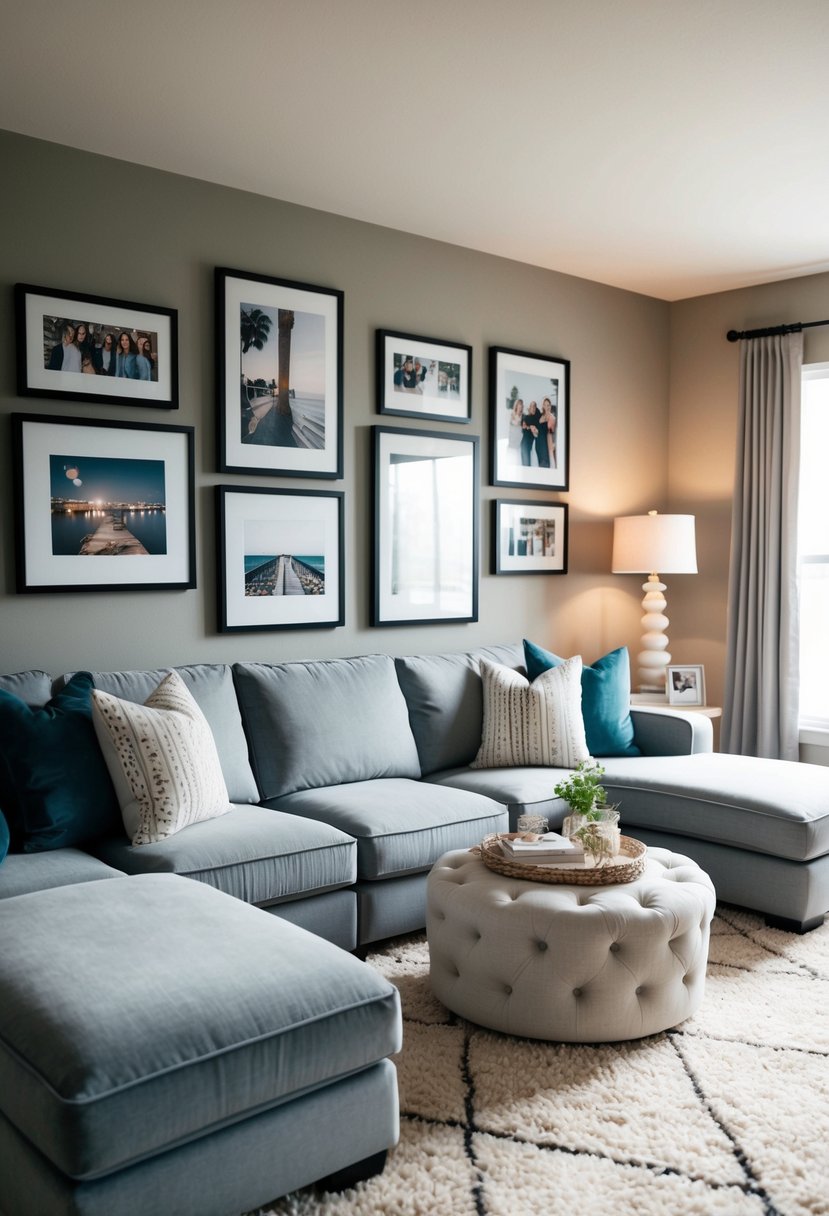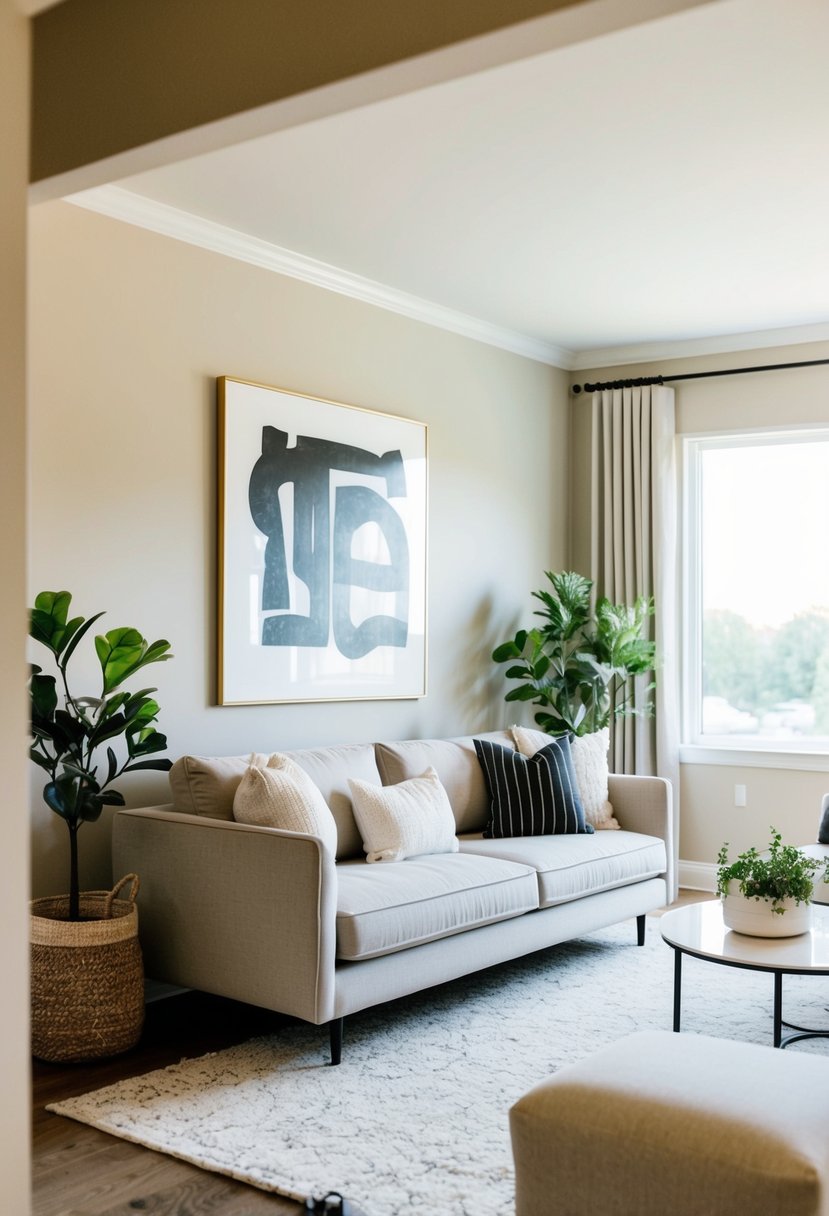Transform Your Home Decor Ideas Living Room Space with Style
Transforming a home decor ideas living room can be an exciting project. From choosing the right furniture to adding decor accents, every detail matters in creating a space that feels both inviting and stylish. Well-thought-out home decor ideas can drastically enhance the appeal of any living room.

The colors you choose for your home do more than fill the walls—they set the mood for every moment spent there. Soft neutrals can create a peaceful retreat, while bold, vibrant hues add excitement and personality. The right color scheme doesn’t just look good—it transforms how a space feels and functions, whether you’re unwinding after a long day or hosting friends for a lively night in.
But what really makes a space feel like yours? It’s the personal touches. Think statement artwork, family photos, or one-of-a-kind decor pieces that tell your story. These details breathe life into a room and turn ordinary spaces into unforgettable ones—because the best designs reflect the people who live in them.
Fundamentals of Home Decor Ideas Living Room
Creating a stylish and functional living room involves understanding key concepts. These fundamentals include assessing the space, choosing a color palette, mastering balance and proportion, and selecting quality furniture pieces.

Assessing Your Space
Before diving into decor choices, it’s crucial to evaluate your living room space thoroughly. Carefully measure the dimensions to ensure everything fits comfortably, and pay attention to architectural features like windows, doors, and built-in shelves that can influence your design decisions.
Consider the natural light that enters the room, as it affects color choices and decor options. Also, think about how the living room will be used. Will it be a space for entertaining, relaxing, or both? Understanding these aspects will guide all decor choices going forward.
Choosing a Color Palette
Selecting a color palette is a crucial step in living room design. A well-chosen palette sets the mood and ties the entire space together. Popular choices include calming whites, soft grays, or vibrant jewel tones.
To create a cohesive look, choose a base color and complement it with two to three accent colors. Use the 60-30-10 rule: 60% of the room should feature the dominant color, 30% the secondary color, and 10% the accent color. Test colors using sample paint swatches to see how they look in different lighting throughout the day.
Understanding Balance and Proportion
Balance and proportion are vital for creating an inviting living room. Achieving visual balance can be accomplished using symmetrical or asymmetrical arrangements. Symmetry often works well for formal styles, while asymmetry can create a more relaxed atmosphere.
Proportion refers to the relationship between elements in a space. For instance, pairing larger furniture with smaller pieces can create a pleasing contrast. Scale is also important; a massive sectional sofa can overwhelm a small room, while tiny chairs may feel lost in a large area. Aim for a harmonious combination that supports comfort and aesthetics.
Selecting Quality Furniture Pieces
Quality furniture is fundamental for both aesthetics and function. Look for well-constructed pieces made from durable materials. Solid wood and high-grade upholstery last longer and withstand wear better.
Choose furniture that fits the room’s style. For example, modern pieces work well in contemporary settings, while traditional designs suit more classic interiors. Comfort should not be overlooked; test chairs and sofas before purchasing to ensure they meet personal preferences. Invest in key pieces like a sturdy coffee table and comfortable seating to enhance the overall decor.
Styling Techniques and Accessories
The right styling techniques and accessories can transform a living room into a welcoming and stylish space. Paying attention to textiles, decorative elements, and lighting enhances the overall aesthetic while creating a comfortable atmosphere.

Incorporating Textiles and Textures
Textiles play a crucial role in adding warmth and depth. Soft cushions, cozy throws, and area rugs contribute to a tactile experience. Use a mix of fabrics like cotton, linen, and velvets to create interest.
Layering textiles is effective in defining areas within the room. For instance, a large area rug can anchor a seating arrangement, while smaller rugs can highlight specific zones.
Choosing the right color palette is equally important. Neutral tones create a calm environment, while pops of color through accessories can energize the space. A well-considered textile strategy ensures the room feels inviting and well-designed.
Adding Decorative Elements
Decorative elements offer opportunities to express personal style. Wall art, vases, and sculptures can serve as focal points. Selecting artwork that resonates with the homeowner’s personality adds character to the living room.
Plants are another excellent addition. They not only bring in color but also promote a sense of tranquility. Consider varying plant sizes and types for visual appeal.
Finding the perfect decorative accessories can be accomplished by mixing different shapes and sizes. Displaying items in groups of three creates balance and visual interest. Attention to detail in decorative elements is key to achieving a cohesive look.
Layering Lighting for Ambiance
Lighting influences how a space feels. It is essential to layer different types of lighting to achieve the desired ambiance. Start with ambient lighting, such as ceiling fixtures, which provide overall illumination.
Task lighting is also important for specific activities, like reading. Tisch lamps or floor lamps allow for targeted light in cozy corners.
Accent lighting can highlight artwork or architectural features. Sconces or spotlights can enhance textures on walls. Combining these elements creates a versatile lighting scheme that adjusts to different moods and times of day.
Personalizing Your Living Space
Creating a living space that reflects personal style can enhance comfort and make it feel truly unique. Individual touches can be introduced through artwork, plants, and personal collections, adding charm and character.

Displaying Artwork and Photos
Artwork can dramatically transform a living space. Choosing pieces that resonate with personal taste is key.
- Gallery Walls: Arranging multiple photos or artworks in a gallery style can create a stunning feature wall. Mixing frames and sizes adds visual interest.
- Framed Prints: Investing in high-quality prints can elevate the decor. Consider local artists or photograph personal memories.
- Placement: Hang artwork at eye level for an inviting ambiance. Use large pieces as focal points to draw attention.
Incorporating Plants and Greenery
Plants bring life and color into any room. They improve air quality and create a calming atmosphere.
- Variety: Use different types of plants, such as succulents, ferns, and flowering plants, for a dynamic look.
- Placement: Position larger plants in corners and smaller ones on shelves or tables. This layered approach maximizes space.
- Care: Choose plants that are easy to care for. Low-maintenance options like snake plants and pothos are perfect for busy lifestyles.
Showcasing Personal Collections
Personal collections add a unique touch to home decor. They tell a story and reflect interests and experiences.
- Curating: Select items that complement the living space. This can include books, antiques, or travel souvenirs.
- Display Options: Use shelves, cabinets, or decorative boxes to showcase collections. Arrange items thoughtfully for an appealing look.
- Rotation: Regularly change displayed items to keep the decor fresh. This practice also allows for creativity in arranging and showing different aspects of one’s personality.
Conclusion
Decorating a living room can be an exciting project. With the right ideas, it can reflect personal style while being functional.

Choosing a color scheme is essential. Neutral tones provide a calm atmosphere. Bold colors can make a room pop.
Here are some styles to consider:
- Minimalist: Focus on simplicity and clean lines.
- Bohemian: Use vibrant colors and many textures.
- Industrial: Incorporate metals and raw materials.
Furniture arrangement is just as important. It can create flow and comfort. Consider different layouts to find what works best.
Adding personal touches helps to make the space unique. Family photos, art pieces, and plants can enhance the living room’s vibe.
Another good resource is 33 of the Best Living Room Ideas (Homes and Gardens). This site discusses color schemes, layouts, and furniture options.
Incorporating these ideas ensures a welcoming and stylish living room. It allows for both comfort and individuality in the home.





